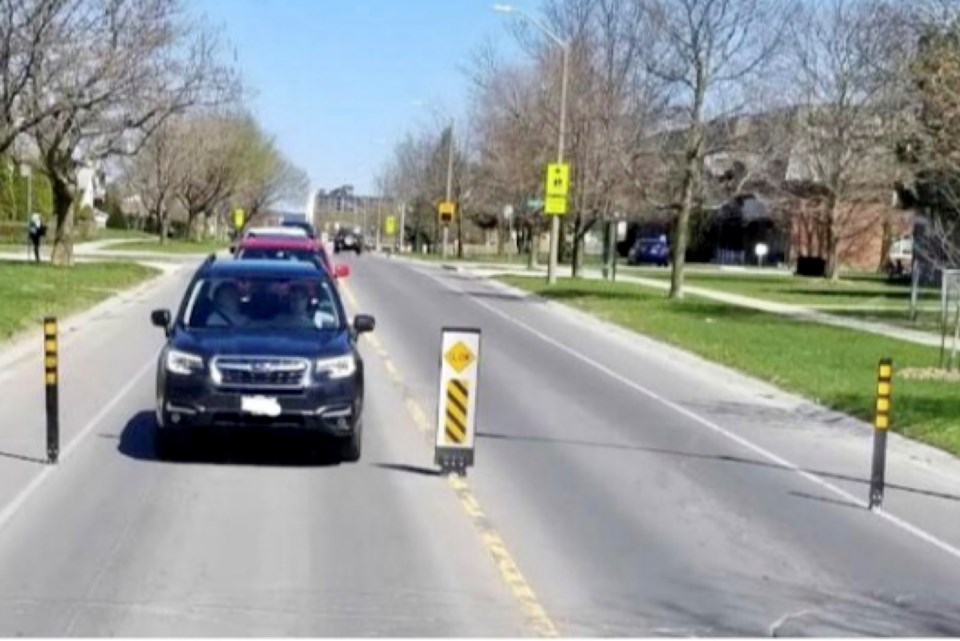City councillors will learn next week of a plan to slow down hot-footed Saultites on five city streets.
"Temporary flexible traffic-calming bollards are a form of passive traffic calming that involves installing flexible bollards along the centreline and shoulders of a road segment to encourage slower and more cautious driving," says Dan Perri, municipal services and design engineer.
"These bollards can be removed prior to the winter so they do not interfere with winter control operations and can be re-installed the following spring after sweeping operations have concluded," Perri says in a report to Mayor Matthew Shoemaker and ward councillors.
"The locations selected provide good coverage across the community."
Here's where city staff have decided to install bollards to cure our speeding tendencies:
- Queen Street East – Boundary Road to Millwood Drive
- MacDonald Avenue – Pine Street to Lake Street
- Black Road – Sinclair Yards entrance to Third Line East
- Fourth Line West – Aronson Drive to Peoples Road
- Base Line – 130 metres west of Carpin Beach Road to 340 metres east of Carpin Beach Road
Perri says that last year, 93 traffic calming assessments were performed.
"The assessments incorporated the following five weighted factors: traffic speeds; traffic volumes; collision history; pedestrian generators; and bicycle facilities or routes.
"Each road segment was awarded points for its score based on each factor, with a maximum score of 100 points. The minimum threshold to qualify for traffic calming is 75 points."
Monday's city council meeting will be live-streamed on SooToday starting at 5 p.m.
